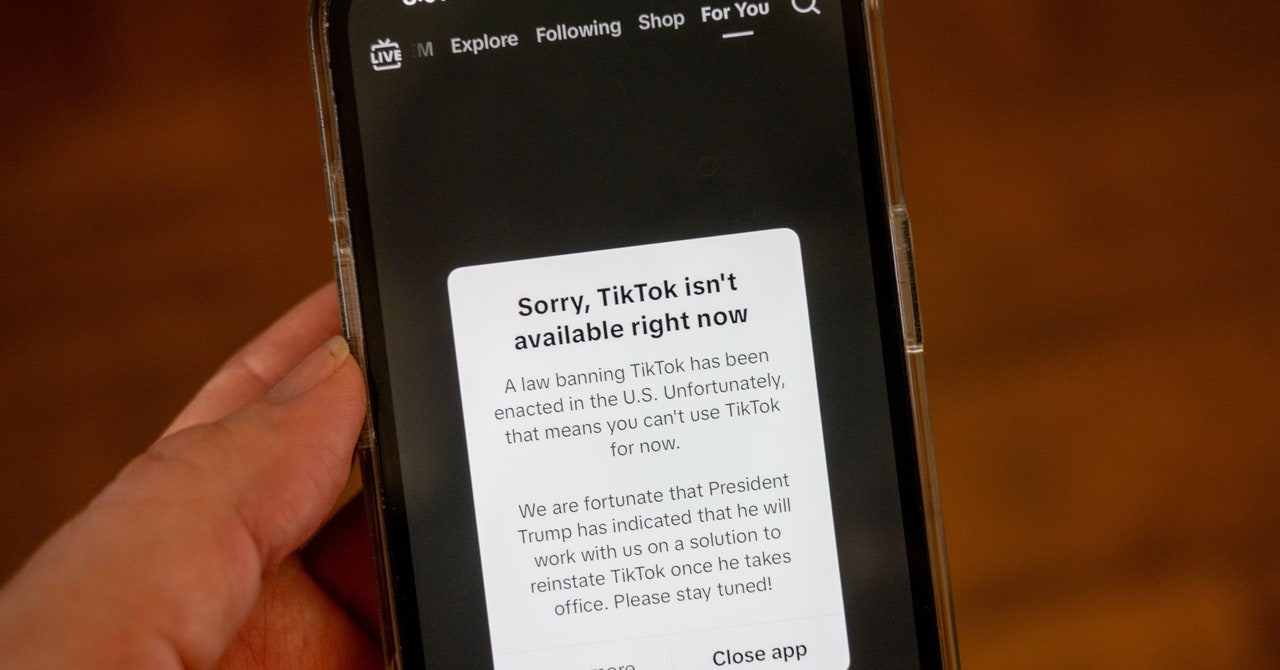Jan 15, 2025 6:00 AM
The Madcap Rise of Memecoin Factory Pump.Fun
In one of the internet’s stranger fringes, a unicorn with human breasts, a cheetah smoking a cigarette, and an animated Elon Musk in a traditional cloak sit cheek-by-jowl—the cast of a bad trip. A Word Art banner tops the page, a floating anachronism. Icons glitter, shimmy, bounce, and in other ways evade the chasing eye. Barely legible messages flick up in green, red and yellow, then vanish.
Yet beneath this belch of Internet weirdness and low-fi web design lies one of the fastest-growing cryptocurrency businesses ever: Pump.Fun, a platform for launching memecoins, a type of crypto coin whose value rises and falls in line with the popularity of the memes it references.
The platform went live in January 2024. In the 12 months since, it has been reported by third parties to have brought in more than $350 million in revenue through a 1 percent cut of trades.
Pump.Fun is the creation of three entrepreneurs in their early twenties: Noah Tweedale, Alon Cohen, and Dylan Kerler. The trio began as memecoin traders themselves, but grew tired of repeatedly falling victim to rug pulls—a type of scam whereby a coin issuer steals away with funds, leaving investors sitting on worthless tokens.
“Buying into memecoins was a very unsafe thing to do … Everything was designed to suck money out of people,” Tweedale told WIRED in an interview late last year. “The idea with Pump was to build something where everyone was on the same playing field.”
The three Pump.Fun cofounders, who met in England, have attempted to keep their identities a secret—Tweedale and Cohen continue to go publicly by their respective online pseudonyms, Sapijiju and A1on, while Kerler has little public association with Pump.Fun. But their names surfaced last year in corporate documents tied to the operation.
Tweedale agreed to meet with WIRED, but only on the condition that the whereabouts and details of his appearance remain undisclosed. When we met, he came across as earnest but somewhat on-edge—and he spoke at a mile a minute. He declined to answer questions about where the Pump.Fun operation is based or how many people it employs.
The secrecy is partly a reflection of an attitude common in the cryptosphere that the right to privacy is sacred, Tweedale claims. But it’s also about “personal security and safety,” he says. In theory, the amount of crypto passing through Pump.Fun wallets could make the team a target for would-be extortionists.
The intention is for the founders to become more public-facing in the future, Tweedale claims. But in the meantime, there is the matter of how best to reinvest the money that Pump.Fun has made to both harden and expand the platform in the face of increased scrutiny and inevitable growing pains. “We’re not here to make a quick buck, close down the website, and run away. We want to build something that lasts,” says Tweedale.
The long-term vision, he claims, is to transform Pump.Fun from a one-dimensional memecoin launchpad into a competitor to the largest social platforms, but where the lion’s share of revenues flow to users and creators. “Imagine Instagram or TikTok, where everything is investible,” says Tweedale. “The Pump UI—everything we have so far—is the earliest possible version of what you can imagine we want to do.”
Before Pump.Fun, relatively few memecoins came to market; only Dogecoin, the original memecoin, and a handful of others—like Shiba Inu, Pepe, and Bonk—achieved any sort of prominence. The complexity of developing a memecoin and the cost of supplying the liquidity necessary to make it easily tradable limited the amount that were released.
By combining a piece of mathematical flair called a bonding curve with a straightforward user interface, Pump.Fun made it possible for anybody to launch a memecoin instantly, at no cost. It also standardized the underlying code, which prevented developers from building in malicious mechanisms to steal funds, in what’s known as a hard rug pull.
The result was an explosion in the number of memecoins. Since Pump.Fun launched, more than 5.5 million unique memecoins have been published through the platform. “I knew it was going to work on the first day we launched. I could just see from the Twitter activity,” says Tweedale.
There is nothing particularly sophisticated about the way Pump.Fun works, says Zach Hamilton, founder of crypto startup Sarcophagus and venture partner at VC firm Hinge Capital. “None of the ideas are new. You could start a new Pump.Fun in an afternoon,” he says. Competitors have since come to market with near-identical platforms—among them Seipex, SunPump, and LMAO.
But the Pump.Fun cofounders were the first, says Hamilton, to figure out how to tear down the barrier to entry to creating new crypto coins—and the platform remains orders of magnitude larger than its challengers. “They took things off the shelf and put them together in the right way, at the right time,” he says.
The rise of Pump.Fun was also catalyzed by a financial nihilism taking hold among younger people, who are turning to riskier investments as a route to a prosperity unavailable to them through conventional means, argues Rennick Palley, founding partner at investment firm Stratos. Though many people lose money trading memecoins, which are notoriously volatile, a few have made a lot—and fast.
“People want to own a house and have a family. They find that the existing financial system doesn’t serve them, so they decide that betting on memecoins is the only way to deploy capital in a way that could be meaningful in their life,” says Palley.
The vast majority of memecoins launched through Pump.Fun wind up nearly worthless, but the chance at outsized returns is irresistible to younger investors, says Cosmo Jiang, general partner and portfolio manager at crypto investment firm Pantera Capital.
“There’s a shift towards shorter-term gambling as opposed to investing; people want to make it in one trade,” says Jiang. “It’s almost economically rational [to bet on memecoins], even if the expected value is negative, because it could put you in a different social and economic tier.”
Though relatively few sophisticated institutional investors have traded in memecoins to date, Jiang believes that venture capitalists—some of whom have criticized memecoins as unserious and potentially damaging to the reputation of the broader cryptosphere—should take the businesses that form around this newly thriving market seriously.
“I’d be happy to invest in a casino, but not to sit at the blackjack table. I think of the memecoins themselves as like sitting at the blackjack table,” says Jiang.
Because of the platform’s juvenile spirit, Pump.Fun is easily dismissed. But its performance puts it in rarefied company; Pump.Fun is estimated to be on track to make more than $1 billion in revenue in 2025. “If this were any other business in the tech world, it would have a valuation of $10 billion or $20 billion,” says Palley. “Pump.Fun has solidified itself as one of the critical pieces of the memecoin industrial complex.”
For all of its financial success, Pump.Fun has suffered its share of travails, arising mostly from an apparent operational immaturity. According to website snapshots captured by the Wayback Machine, Pump.Fun only published its terms of service and privacy policy—basic necessities for any business—in late November, by which time hundreds of millions of dollars had already passed through the platform. “There are certainly a lot of reasons to believe that many of these [memecoin launchpad] platforms have some growing up to do,” says Jiang.
In May of last year, Pump.Fun employee Jarett Dunn allegedly exploited his administrative privileges to drain money held in escrow on the platform, leading users to incur nearly $2 million in losses. Three months later, Dunn pleaded guilty in a UK court after being accused of, among other charges, fraud by abuse of position, before stating he’d like to withdraw the plea. Dunn is scheduled to present his justification for changing the plea at a hearing in February, he told WIRED over email. (The affected Pump.Fun users have since been compensated, the platform claims.)
Meanwhile, Pump.Fun was starting to become a locus for ethically dubious trading activity, in spite of its founding objective to shield memecoin investors. In particular, the platform has found it impossible to protect against soft rug pulls, whereby somebody creates a new crypto token, promotes it online, then sells off their entire holdings, sinking its price. The rise of Pump.Fun has coincided with an increase in the volume of this kind of tactic, according to crypto security company Blockaid.
In November, a child livestreamed himself on Pump.Fun pulling off what appeared to be a soft rug pull, flipping two middle fingers to the webcam as he walked away with tens of thousands of dollars. At the time Tweedale declined to comment on the incident, but told WIRED that Pump.Fun plans to introduce age restrictions.
“People say there’s a bunch of different stuff you can do to block soft rug pulls—maybe a sell tax or lock up the people who create the coin. Truthfully, all of this is very easy to manipulate,” says Tweedale. “We are actively looking for ways to protect users.”
Shortly thereafter, facing a groundswell of criticism, the platform suspended its popular livestreaming feature. To peacock for attention in an overcrowded market, people reported on X, coin creators were livestreaming themselves performing dangerous, sexually degrading, and potentially illegal acts. In two particular cases, creators supposedly threatened to hang themselves and commit acts of violence live on Pump.Fun. Tweedale did not respond to a request for comment about these incidents.
“To ensure the absolute safety of our users, we will be pausing the live streaming functionality on the site for an indefinite time period until the moderation infrastructure is ready to deal with the heightened levels of activity,” a notice posted to Pump.Fun’s website stated.
These shenanigans have awoken regulators to the memecoin phenomenon, which could create new compliance headaches for Pump.Fun and put the brakes on its madcap expansion.
In December, the UK Financial Conduct Authority issued a warning against Pump.Fun: “This firm may be providing or promoting financial services or products without our permission. You should avoid dealing with this firm and beware of scams,” the notice read. In response, Pump.Fun blocked UK residents from accessing the platform.
Because memecoins do not compare neatly with traditional financial assets, others suspect that gambling regulators—as opposed to financial watchdogs—will seek to govern the memecoin market in the near future. “It is basically unregulated gambling. It’s going to probably come down to the purview of whoever the regulator of gambling is in each country,” says Robert Le, a crypto analyst at market data company PitchBook.
Pump.Fun declined to comment on the prospect that memecoin trading could be regulated as gambling. But the founders are sensitive to the criticisms of the platform and the need to further professionalize the operation in line with its rapid growth and newfound prominence.
“I want to stress, we don’t want people to lose money on our platform. It doesn’t benefit us by any means,” says Tweedale. “We want to create something that lasts—that isn’t a scam like everything else in this industry. I want to create something that breaks the wheel and actually grows the market of crypto as a whole.”
Part of that plan entails using Pump.Fun’s early success and established userbase to expand the platform into a general-purpose destination for social content, he claims.
“We no longer describe them as memecoins internally. I see them more as content,” says Tweedale. “Instagram and TikTok are syphoning a lot of value away from creators. The thing we want to create is one step above that, where all the money flows directly towards the creators.”
The route to Pump.Fun achieving that end is unclear; Tweedale did not make himself available to discuss his plans in further detail. But investors see potential in the idea of using crypto as a way for people to invest in online creators they believe to be promising. (Though perils abound, as shown recently by the outcry over a memecoin launched by Haliey Welch of Hawk Tuah fame.)
“I don’t know how they would do it, but I love the idea of a floating market for content creators,” says Hamilton, the venture capitalist and Sarcophagus founder.
“When I talk to the young guys trading memecoins, it is such a social experience. It’s not a sit-alone-in-your-basement experience,” says Jiang. “It would make sense to marry some of that natural discourse already happening around memecoins with the platform being used to launch the coins.”
Though counterintuitive, the way forward is for Pump.Fun to divorce itself from the culture of frenzied financial speculation on which its early success has been built, Tweedale proposes. “I have a problem with the way crypto is used in speculation,” says Tweedale. But if the profit motive behind memecoin trading can somehow be harnessed to realign social-media economics to better favor users and creators, he claims, “that’s when you create something truly great.”



